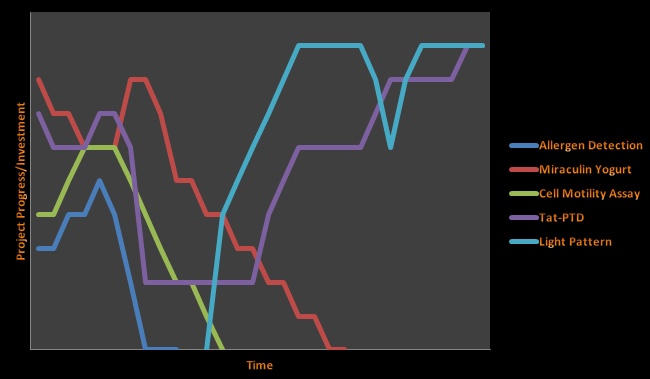Team:Brown/Obstacles learning
From 2010.igem.org
(→The Team) |
|||
| Line 1: | Line 1: | ||
{{:Team:Brown/templates/header}} | {{:Team:Brown/templates/header}} | ||
=What We've Learned= | =What We've Learned= | ||
| - | [[Image:Autoclavefail2.jpg|frame|center|An early autoclave disaster]] | + | [[Image:Autoclavefail2.jpg|frame|center|An early autoclave disaster. The lesson: Liquid is for liquids, be sure not to accidentally put liquids in at Gravity setting]] |
We faced many obstacles this summer and learned a lot from them, both as students and as scientists. | We faced many obstacles this summer and learned a lot from them, both as students and as scientists. | ||
Revision as of 17:46, 27 October 2010
What We've Learned
We faced many obstacles this summer and learned a lot from them, both as students and as scientists.
The Team
Brown's team structure is unique to the iGEM community. Unlike the majority of teams, we are completely independent undergraduate students. We do not have a PI or graduate students to continually instruct us in what to do, nor a lab that has years of data and background on a given project. All students on the team are doing iGEM for the first time. Our advisors are available to answer specific questions, help us solve critical laboratory issues, and suggest things to look into, but the entirety of the project idea creation, evaluation, and execution is our own. Although the lack of external structure was at times frustrating, it was immeasurably valuable in teaching us independence, prioritization, and organization.
Our team is also composed purely of first- and second-year students. This means that within the six-person team, there was a wide range of background knowledge. With such a variance in the level of knowledge and practice, it was often difficult and time-consuming to bridge gaps between members. However, in working through this, we learned to be not just peers, but peer educators, and in the end we all emerged as a cohesive team with a much closer level of understanding.
The Lab
Lack of sterile conditions. Have to walk 10 minutes to get to an autoclave. Have to order all our own materials. Have to make plates/stocks/etc. Tough to achieve sterile conditions. Lack of BSL2
The Projects
Started the summer with 3, emerged with 2, one of which we came up with halfway through.
Failed projects:
Motility
This is what happened with motility
Allergen Detection
Discovery that it recently existed, cite the specific patent war
Miraculin
Difficulty in both finding and obtaining a suitable plasmid. Difficulty obtaining a 30C incubator. Difficulty transforming Yeast.
Valuable insights
In having to design our own experiments from the bottom up, we all learned a lot about protocols and experimental design. We learned how to run a lab, not just work in one. We learned how to work as a team. We learned how to be creative, and deal with the failure of our ideas.
Compared to our courses, our other research experiences, etc, this is not the level of success we are used to nor expect. But this is also not the average challenge we face. We are unique in the iGEM world, and in the world of undergraduate research at Brown. Our pride in our work this summer is not the number of papers we publish, or even the number of parts we contribute, but how we have learned keep moving forward when you face these difficulties.
 "
"

